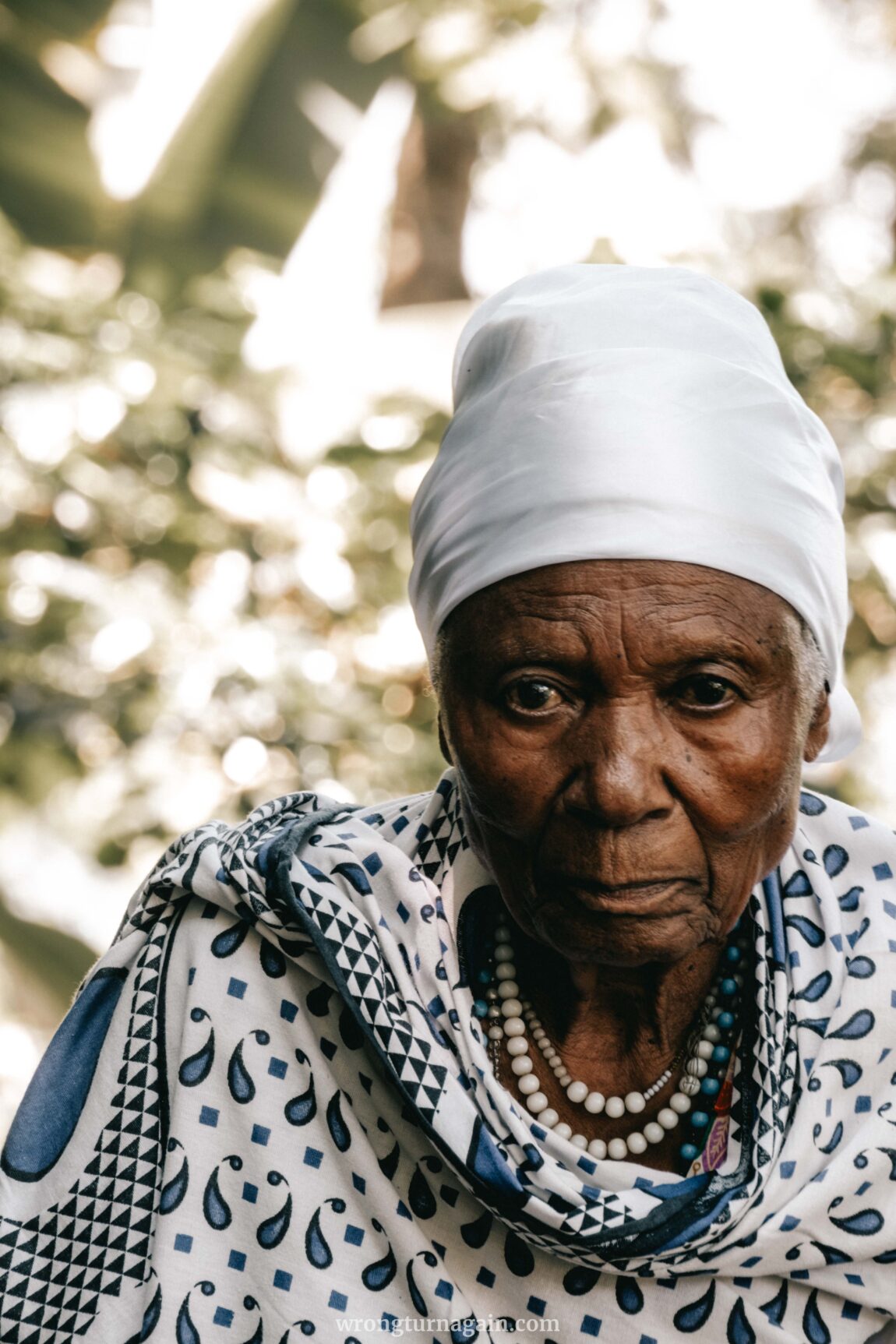
From their unique agricultural practices to their vibrant rituals and communal lifestyle, the Chagga tribe offers a fascinating glimpse into a heritage steeped in both tradition and adaptation to the modern world. To connect with this vibrant community, you can explore the villages situated around the slopes of Mount Kilimanjaro. Arusha and Moshi serve as gateways to these regions, offering a starting point for guided tours or treks into Chagga territories.
Join us on a journey to uncover the captivating story of the Chagga tribe, where heritage meets the heights of Kilimanjaro’s splendor.

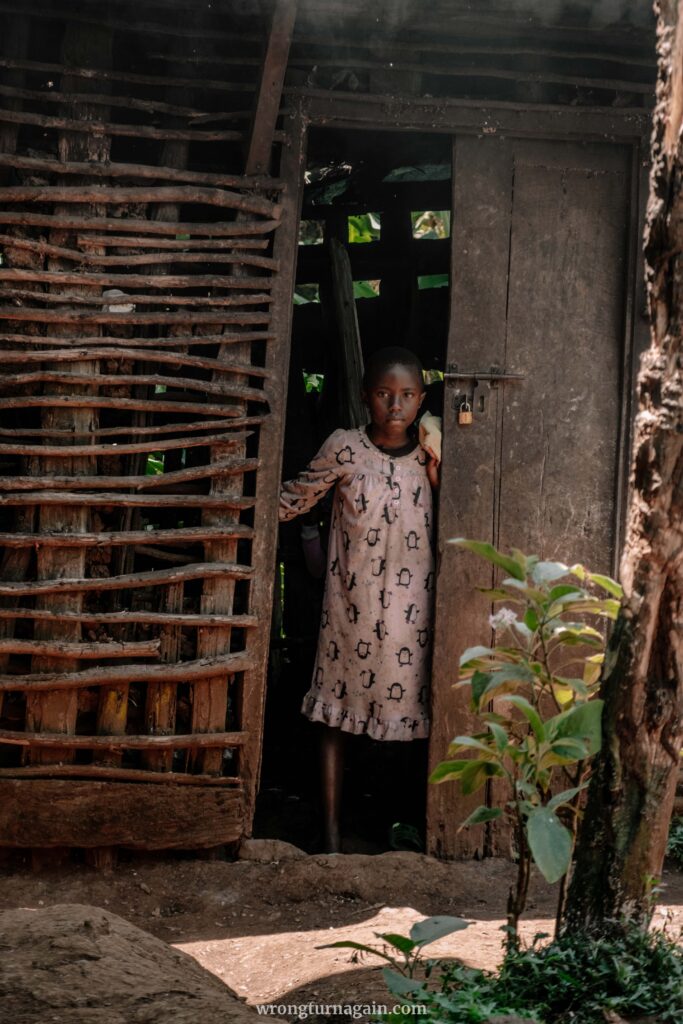

The Chaggaland
The Chagga trace their ancestry to diverse Bantu groups that migrated from various parts of Africa into the formerly forest-clad foothills of Mount Kilimanjaro around the 11th century. However, their cultural unity was absent for centuries. Similar to their neighboring and often adversarial group, the Maasai, the Chagga were fragmented into distinct clans. These clans claimed specific territories along the southern and eastern slopes of the mountain, demarcated by natural features like ridges, rocky formations, and ravines.
Thus, throughout the centuries, the mountain served as a mosaic of smaller units (“mitaa”), evolving from clan leadership to smaller chiefdoms, which progressively merged into larger ones. These chiefdoms were overseen by sovereign and independent “mangis”, a term that translates to ‘kings’ in the Kichagga language. Their reigns were marked by conflicts and occasional alliances, all aimed at consolidating power.

Following Tanzania’s independence in December 1961, the authority of these chiefs dwindled, leading to the eventual abolition of the chiefdom system. Consequently, the once-divided clans consciously united to forge the modern Chagga culture. While the traditional clans may be considered relics of the past, their legacy endures. Take, for instance, the rivalry between “Marangu” and “Machame” – once opposing clans competing for dominance – now merely names of routes leading to the summit of the majestic mountain.

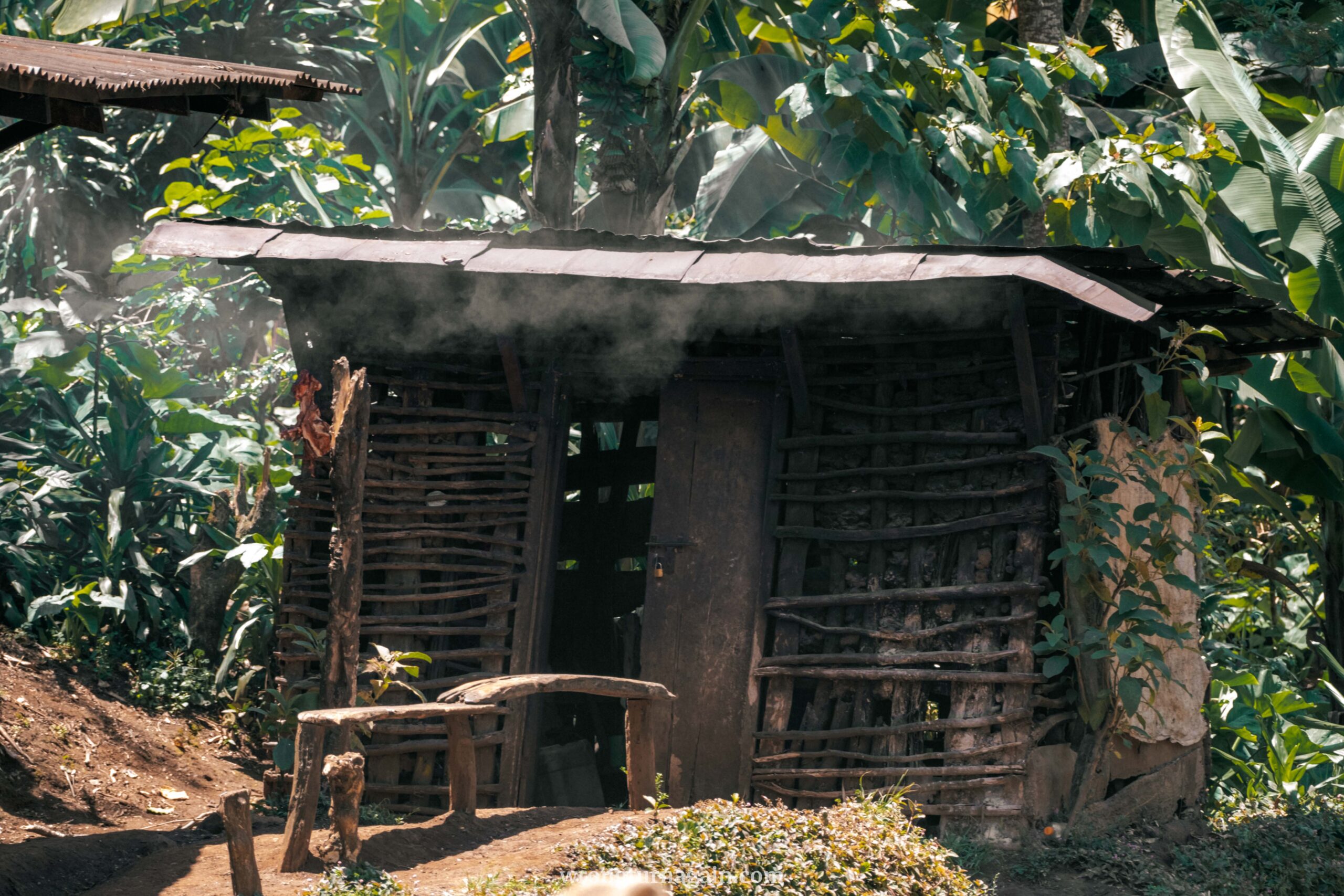
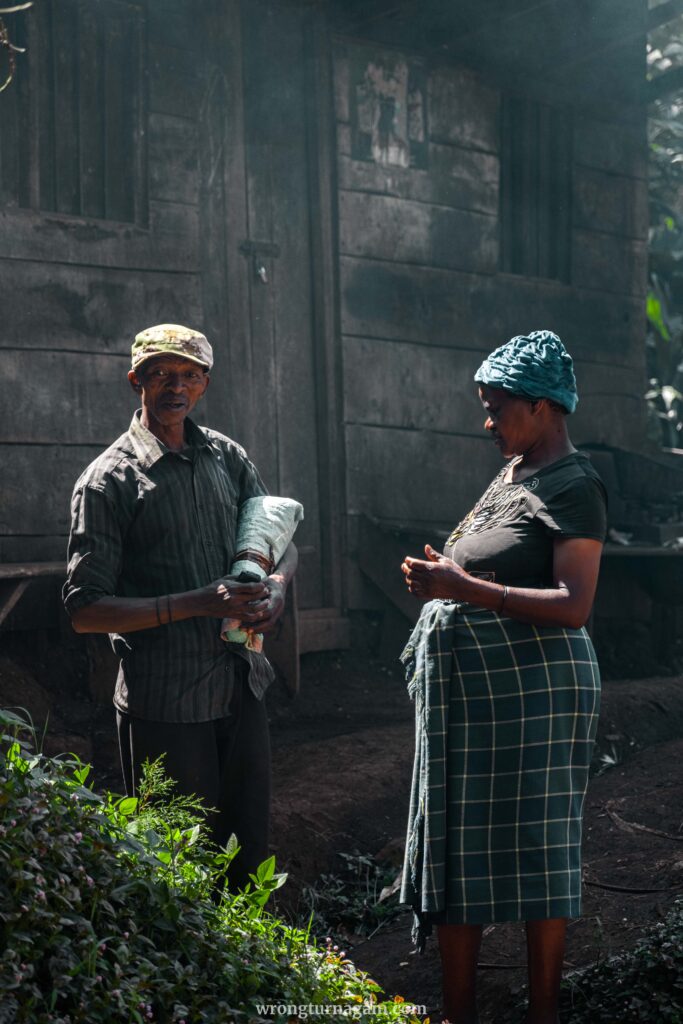
Chagga Cultural Identity
Comprising approximately 1.5 million individuals, the Chagga people stand as Tanzania’s third-largest ethnic group. Kichagga serves as their primary language, exhibiting dialectical variations across distinct Chagga regions, yet fostering mutual comprehension among its people. Additionally, nearly all Chagga individuals are fluent in Swahili, the national language used for instruction in primary schools throughout Tanzania.
Traditionally, Chagga attire featured cowhide garments. However, through increased interaction with the world beyond their borders, Chagga clothing now incorporates imported bead ornaments and vibrant cloth wraparounds known as kangas and kitenges. These colorful fabrics are draped around the body, worn as dresses, and often utilized for carrying babies on the back or hip. Elderly women, in particular, maintain a preference for long cloth wraps over their attire.
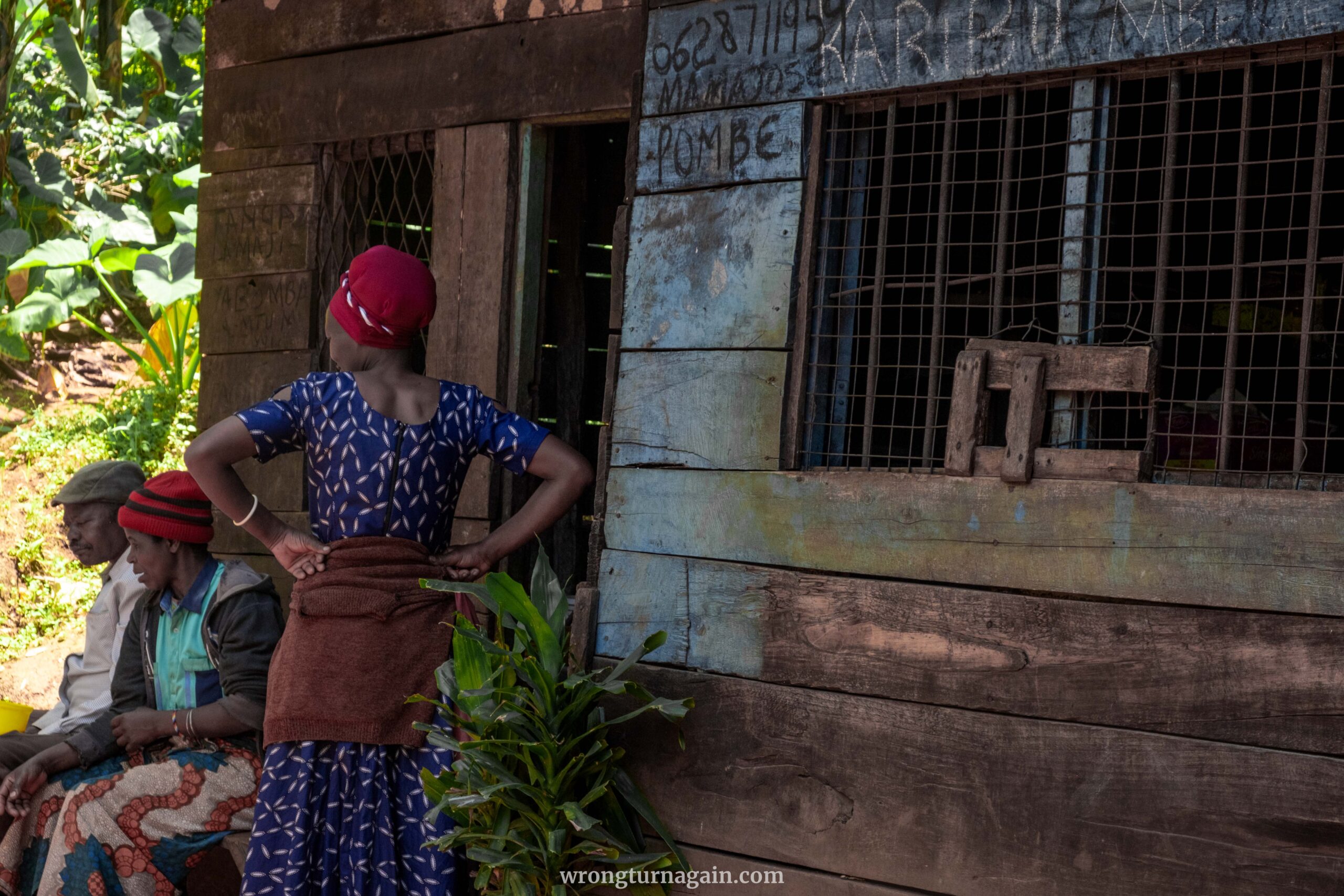
The artistic expressions of the Chagga encompass a variety of forms, including wood carvings that produce utensils like bowls, large beer tubs, spoons, and ladles. Basket weaving and the creation of musical instruments such as wooden flutes, bells, and drums also feature prominently.
Dance and song form an integral part of Chagga celebrations, with distinct dances tailored to specific occasions. For instance, a visit to the Materuni Waterfalls and a tour of a coffee farm reveals a communal rhythm as everyone claps and chants “Twanga (crash/grind)” while manually pounding coffee beans. This ritual reflects the Chagga philosophy that strenuous labor should be a shared endeavor among family members, alleviated through the joyous rhythm of song.


Chagga Spiritual Traditions
The cultural tapestry of the Chagga community weaves a vivid fabric of folklore and age-old beliefs, cherished particularly in the rural landscapes. And although the fervor and extravagance of certain rituals have waned, remnants of these traditional beliefs persist among some, carrying echoes of a bygone era.
Embedded within traditional Chagga spirituality was a profound reliance on superstition: rainmakers and rain-preventers were esteemed members of society, dreams were revered as infallible oracles foretelling the future, and the shadow of witchcraft (known as “wusari”) loomed large. Medicine men were pivotal figures that not only tended to spiritual well-being but also wielded skills to heal physical afflictions. For the offering of a goat and a generous quantity of banana beer —an essential component of Chagga ceremonies— these healers could purportedly lift any curse and cure a myriad of maladies.
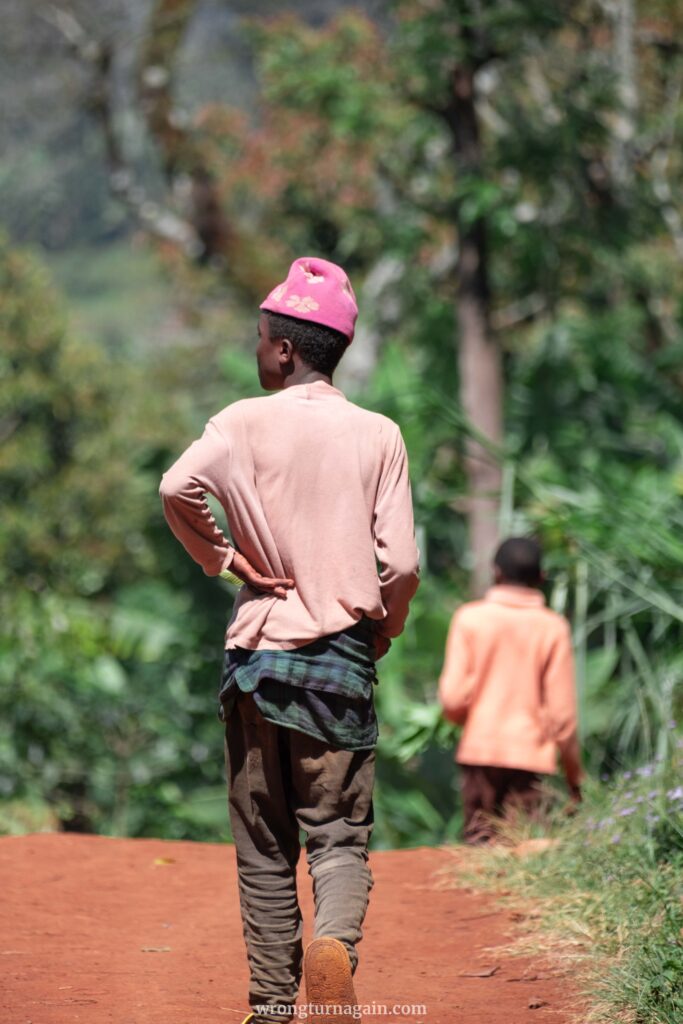
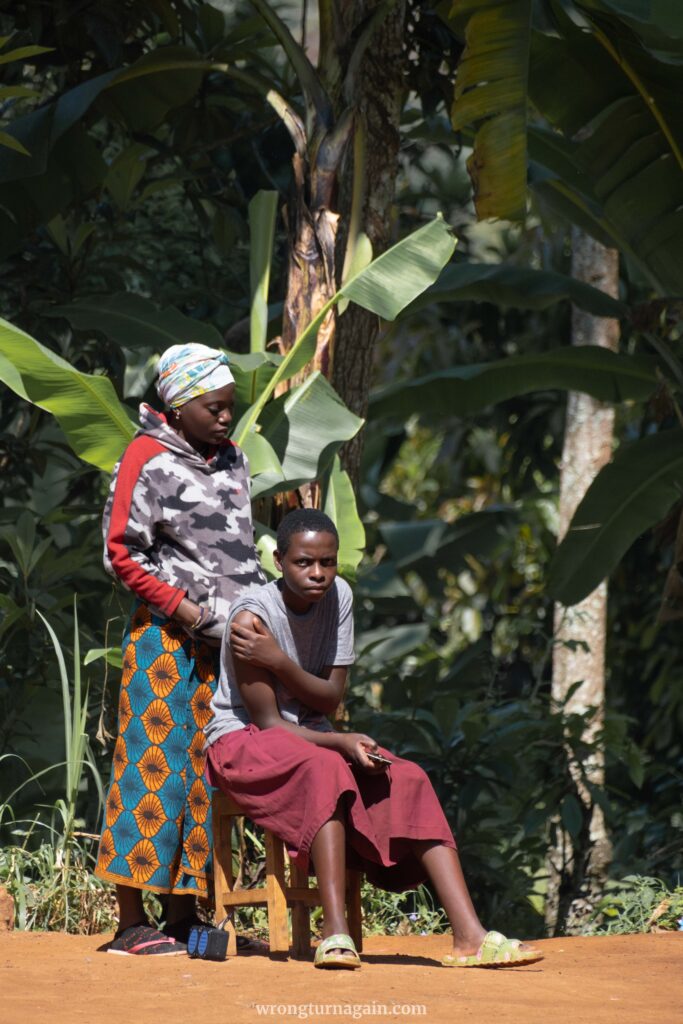
At the heart of their legends stands Ruwa, the Chagga deity renowned for mercy and benevolence when beseeched by devotees. Referred to as the Chagga word for “sun,” Ruwa isn’t regarded as the progenitor of humanity but rather as a liberator and provider of sustenance.
Yet, over time, persistent missionary efforts have steered the Chagga towards Christianity. By the late nineteenth century, both Protestant and Catholic missions had firmly established their presence, disseminating their influence through preaching and education. Consequently, Western religions have reshaped or tempered traditional Chagga beliefs, marking a shift in their practices and ideologies.

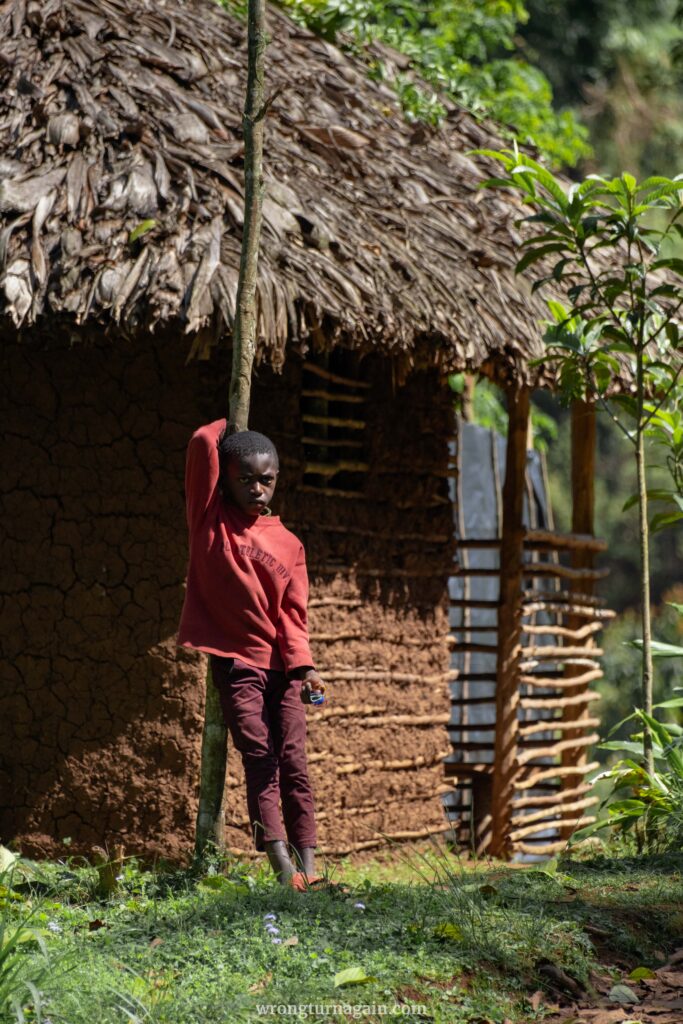

Chagga Family & Dwellings
Once allowing polygynous unions, the influence of Christianity has predominantly fostered a shift toward monogamy, albeit occasionally manifesting as a series of successive monogamous marriages. Emphasizing the importance of heirs, Chagga couples often aspire to have numerous children, particularly sons, to perpetuate the lineage. Inheritance of land follows a patrilineal structure, favoring the first and last-born sons. Middle-born sons receive a smaller portion of land, typically located away from their ancestral homesteads.
The Chagga households, initially composed of a husband, wife, and their young offspring, evolve with distinct dwellings: the husband constructs a separate hut, often shared with elder sons, while the wife maintains her own hut, accommodating unmarried daughters and very young sons.

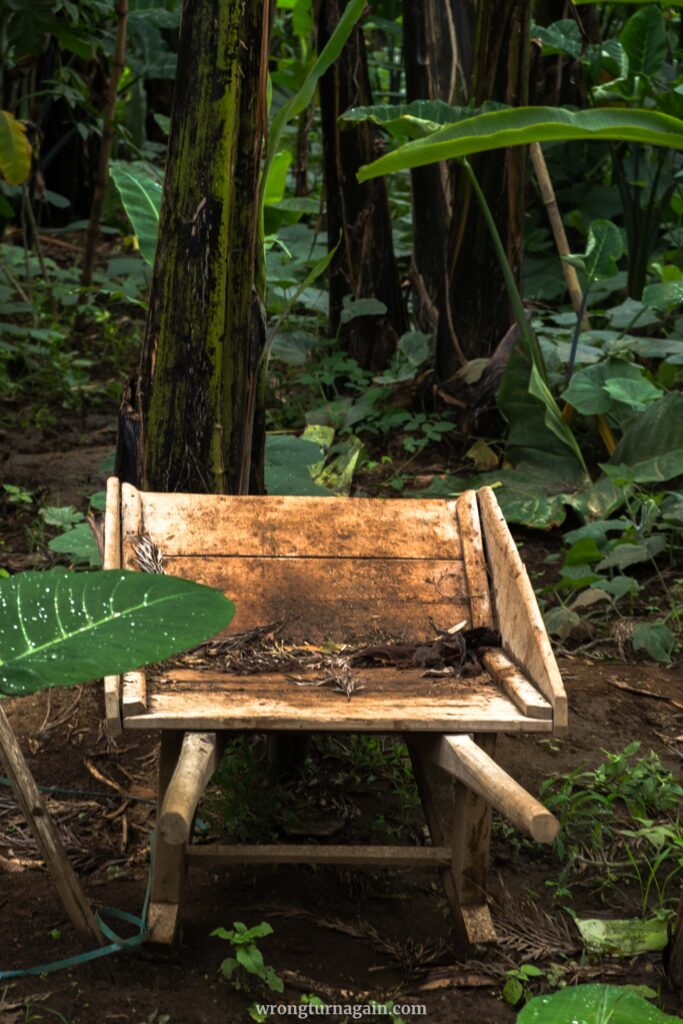
Yet, these homesteads are not nestled within a conventional village setting. Across the rural expanses of Kilimanjaro, the landscape is devoid of nucleated villages. Instead, each Chagga household establishes its own abode within a banana grove, known as a kihamba. These groves, interconnected and often bordered by living fences, sprawl across the mountainside. And due to the burgeoning population and subsequent scarcity of land there are no significant tracts of uncultivated land in between them.
But the kihamba isn’t merely a domicile for the living: it serves as the eternal resting place for the deceased as well.
Previously, deceased family members were initially interred beneath the family hut. After at least a year, their remains were exhumed, and most were reburied within the banana grove. Within this grove, an area designated by dracaena plants was reserved for the ancestors’ skulls, symbolizing a descendant’s right to a specific banana garden. While contemporary burial practices may align with Christian rituals, the prevailing custom sees individuals laid to rest at home, within the banana grove. Regardless of distance or time spent away, the Chagga anticipate a return to the homeland for burial amidst the banana orchard.


Chagga Economic Landscape
Renowned for their economic prowess, the Chagga stand as one of Tanzania’s most influential and prosperous groups. Their success finds roots in the fertile soils and favorable climate of Kilimanjaro, amplified by their early exposure to Western education. Kilimanjaro stands as one of the pioneering regions to welcome missionaries from Europe, contributing to the Chagga’s educational advantage over many other African tribes.
Agriculture reigns supreme as the primary revenue source for the Chagga. Throughout the rural stretches of Kilimanjaro, bananas take precedence, cultivated for direct consumption, to prepare numerous traditional dishes, or to craft the local alcoholic beverage Mbege, enhanced with the inclusion of finger millet. Coffee, introduced initially by the Catholic Church to finance missionary endeavors, swiftly gained traction under colonial rule, emerging as a pivotal cash crop, engaging the local populace in the monetary economy.
Furthermore, each homestead typically owns a plot in the plains where seasonal crops such as maize, beans, finger millet (eleusine), and sunflowers are cultivated, diversifying their agricultural output. They also maintain a small number of stall-fed livestock, serving a dual purpose by providing both meat and fertilizing the banana gardens with their manure.



How to Visit the Chagga
For those traversing the peaks of Mount Kilimanjaro and Mount Meru, encountering the Chagga is an inevitable and enriching experience. Many Chagga individuals serve as guides and porters for trekkers, offering a unique opportunity to engage with them during summit hikes. Whether your adventure involves conquering Africa’s highest peaks or opting for a day hike on the Marangu or Machame Routes, you’re in for a taste of both the mountain’s grandeur and the vibrant Chagga culture.
For a deeper immersion into Chagga life, centered around their cultivation of coffee and bananas within the kihamba, consider a day trip to their homeland. Among the Chagga villages nestled on Mt. Kilimanjaro’s slopes, Materuni and Marangu stand out for good reason. To embark on this cultural journey, consider opting for an organized tour from either Arusha or Moshi. While both cities offer access, Moshi is often the preferred choice due to its proximity, resulting in more cost-effective tour options.
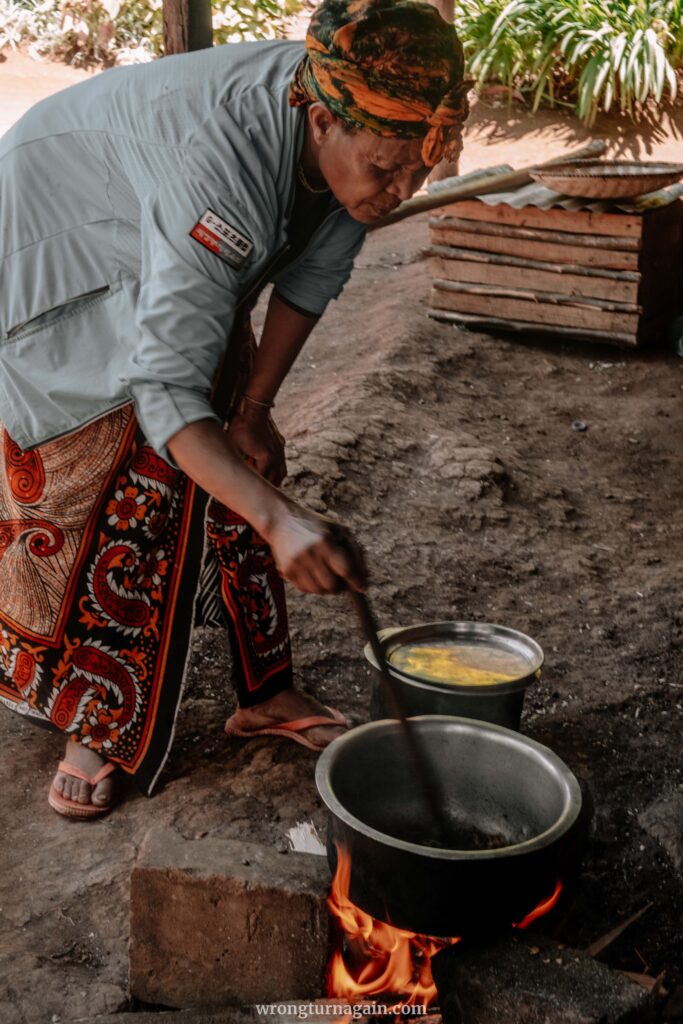
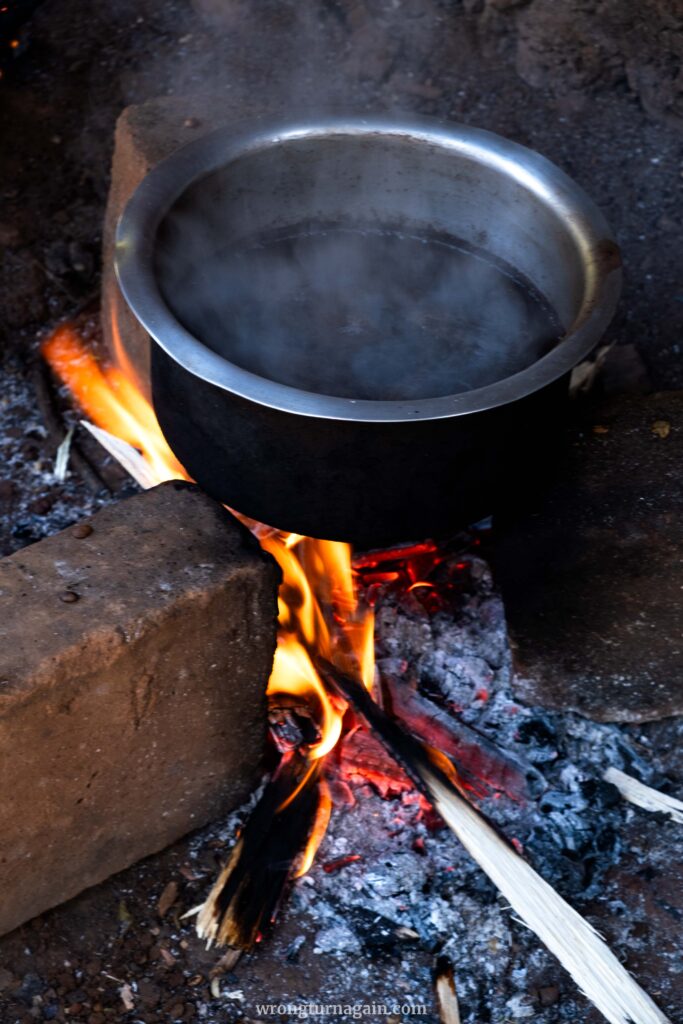
Materuni Village
Your adventure commences with a scenic 30 to 40-minute hike to the breathtaking Materuni Falls. Along this trail, soak in panoramic views of Mt. Kilimanjaro while your local guide shares insights into the area’s rich flora and enthralling history. Take a delightful pause to savor local banana beer—a perfect introduction to the community’s flavors.
As the resonant sound of cascading water grows louder, anticipation heightens until you behold the mesmerizing Materuni Falls. Stand beneath the waters as they gracefully tumble into a serene pool, inviting you for a tranquil dip.

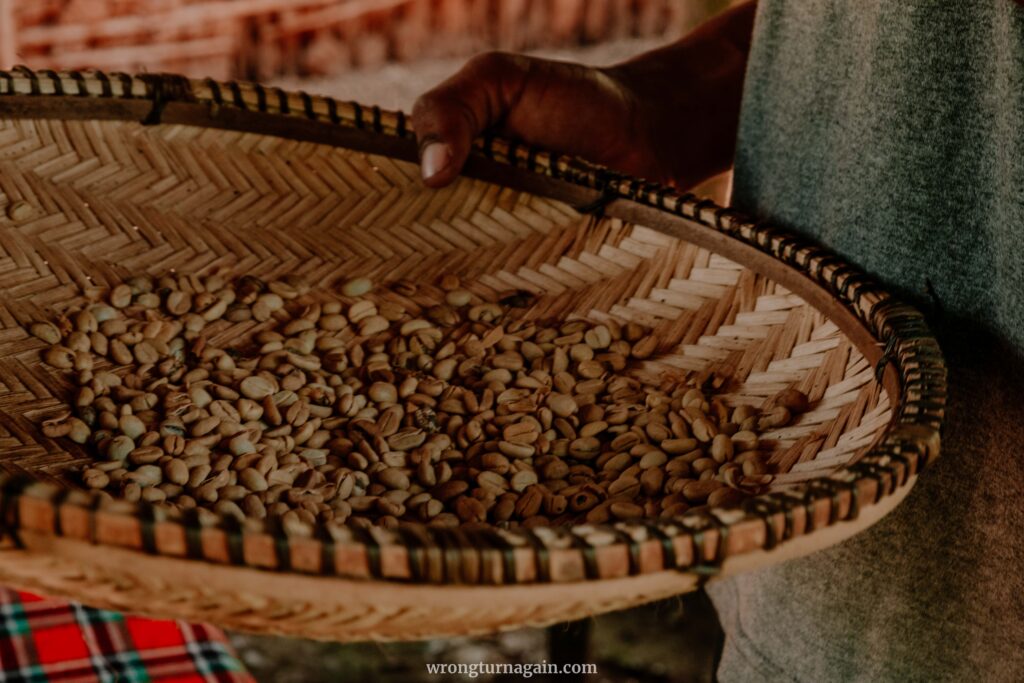
The return journey unveils another layer of Chagga life as you visit a kihamba, a traditional Chagga house nestled amidst a thriving banana grove. Here, delve into the intricate world of coffee cultivation. Engage hands-on in crafting your cup of coffee, from peeling the beans to roasting and grinding—an enriching experience that culminates in a family-cooked lunch featuring delectable banana-infused dishes.
Most tours offer an additional visit to the Kikuletwa Hot Springs, also known as Maji Moto or Chemka. This oasis of geothermal warmth ensconced within picturesque woodlands offers the perfect finale to an already mesmerizing exploration!
— BY ORGANIZED TOUR —
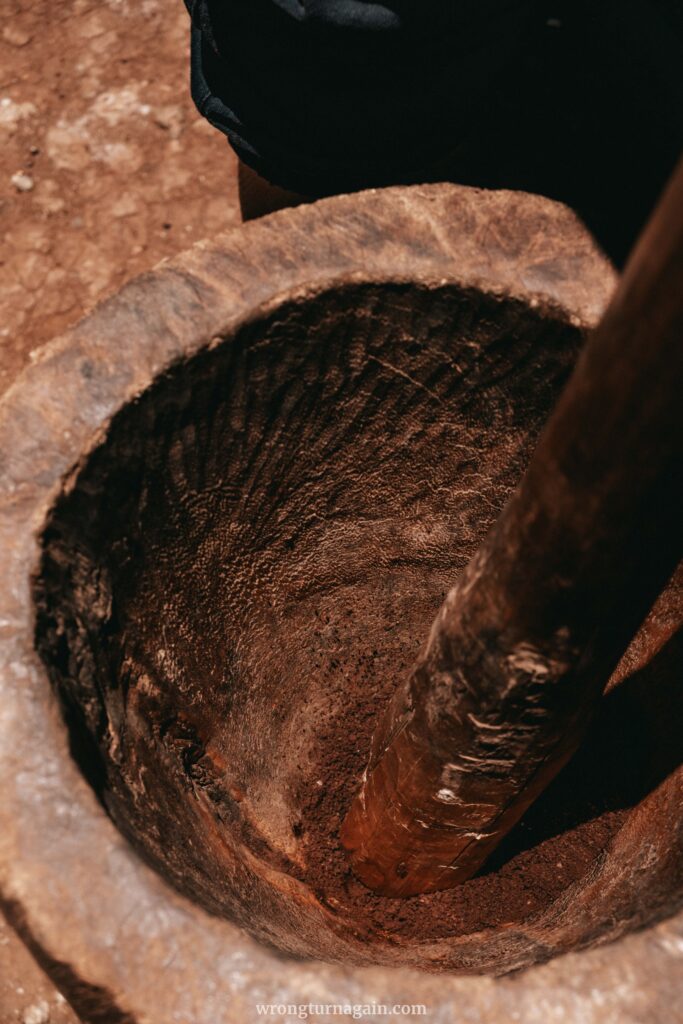

Marangu Village
Nestled amidst lush foliage, Marangu pulsates as the vibrant epicenter of Chagga culture, serving as a bustling market town brimming with vitality. Its name, translating to ‘place of water,’ mirrors the richness of its environment: a scenery embellished with babbling brooks and tumbling waterfalls. The Ndoro waterfalls, an essential stop on your journey, epitomize the opulence inherent in Marangu’s aqueous heritage.
Continue your exploration with a visit to the Outdoor Chagga Museum, an immersive showcase featuring traditional Chagga huts, tools, and artifacts. Then delve into the intriguing narrative of the Chagga Caves, carved out for defense some 200 years ago. As the Maasai descended to Kilimanjaro’s lower slopes in search of sustenance during droughts, the Chagga ingeniously devised this subterranean network of caverns to safeguard themselves and their livestock. The tunnels, initially wide enough to accommodate the tall Maasai warriors, abruptly narrowed—a strategic chokepoint where the Chagga awaited, armed with spears, to repel the invaders.
Much akin to the Materuni village experience, your journey includes a coffee tour at a local family’s homestead. Here, engage in the art of crafting your own cup of coffee in the authentic Chagga way, savor the distinctive mbege banana beer, and relish a sumptuous Chagga lunch.
— BY ORGANIZED TOUR —

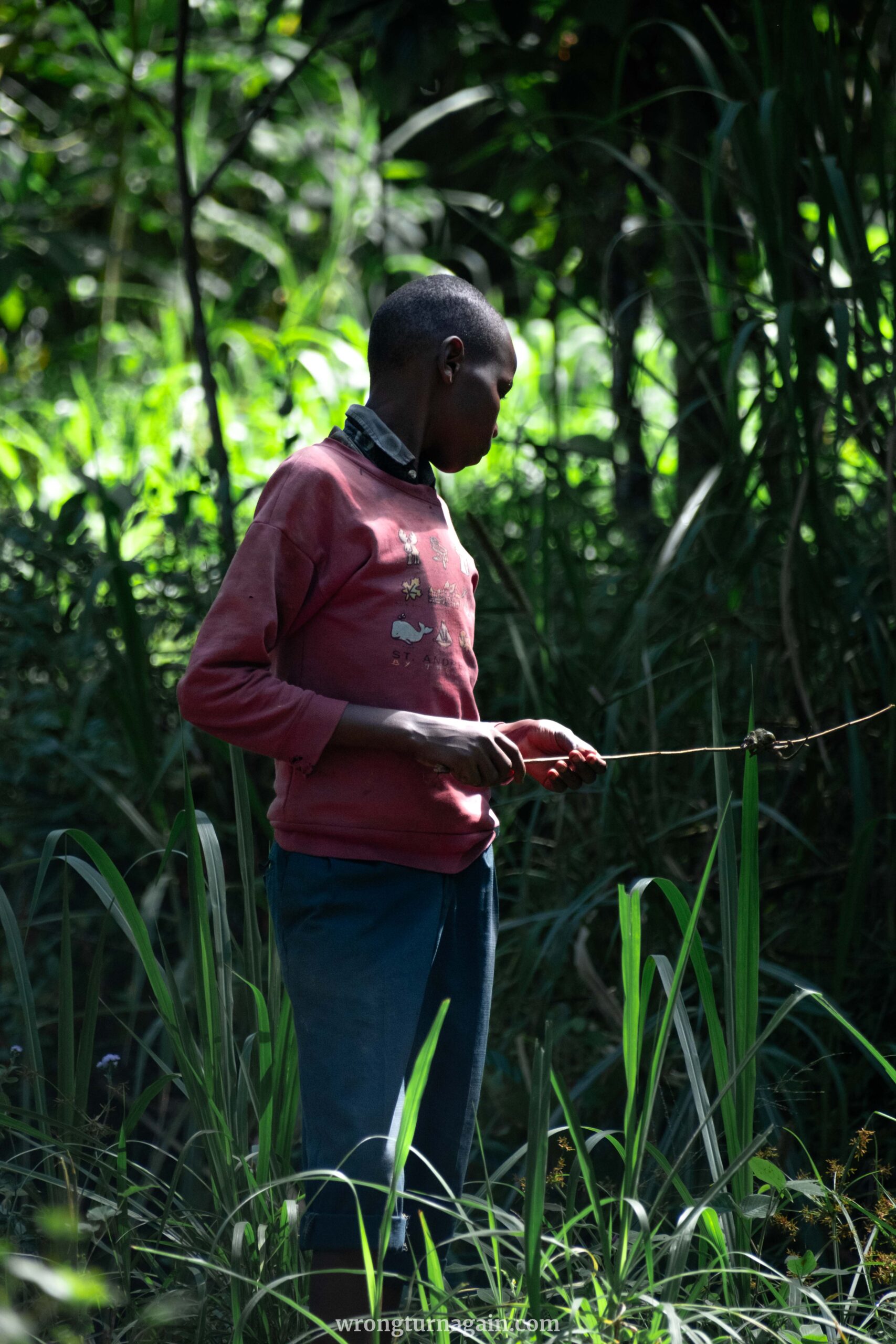
As we bid farewell to the enchanting world of the Chagga people, their rich traditions, and breathtaking landscapes, let this be just the beginning of your exploration across Northern Tanzania’s cultural tapestry. From the vibrant markets of Marangu to the mesmerizing waterfalls of Materuni, these glimpses into the Chagga way of life are merely a fraction of the diverse stories woven into the fabric of this region.
Venture forth into the enchanting realms of other tribes, from the Maasai to the Hadzabe and the Datoga, each with its unique customs and captivating narratives waiting to be discovered!